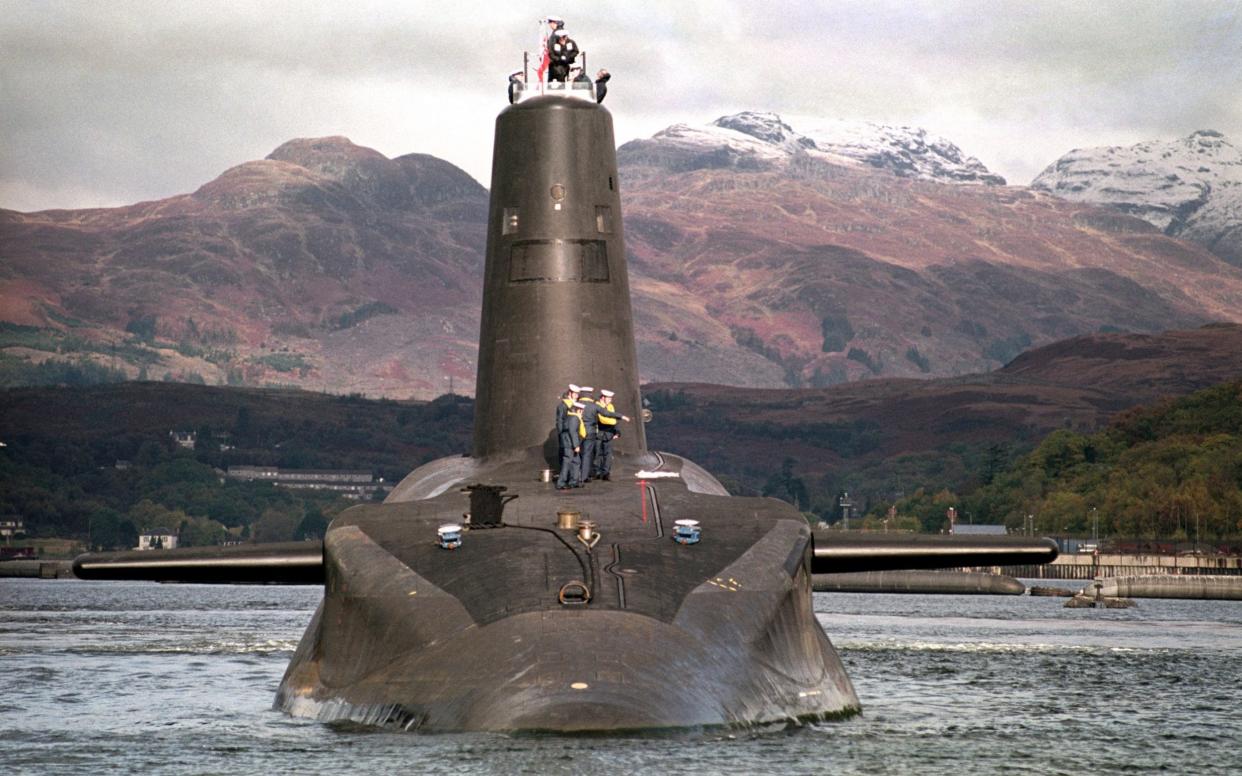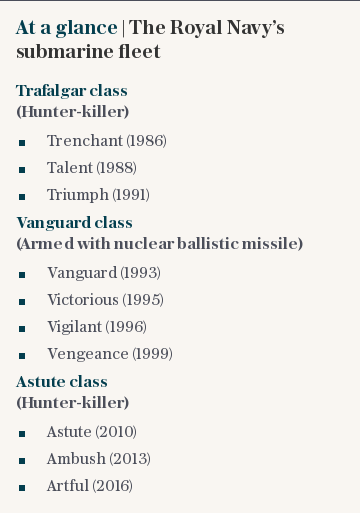Britain could use nuclear weapons against 'emerging technology' threats such as cyber and AI

Britain could use nuclear weapons if faced with a threat from devastating “emerging technologies” such as cyber and artificial intelligence, the Government’s landmark foreign policy review has warned.
The Government has long stated that the UK would not conduct a nuclear strike against any non-nuclear weapons state that complies with a 1968 non-proliferation treaty. The guarantee does not apply to states that break the terms of the agreement.
On Tuesday, the Prime Minister expanded the caveats to warn that Britain reserves the right to review this assurance “if the future threat of weapons of mass destruction, such as chemical and biological capabilities, or emerging technologies that could have a comparable impact, makes it necessary”.
A Government source said the emerging technologies included “game changers” such as cyber, AI, encryption and laser directed energy weapons.
Tom Plant, director of proliferation and nuclear policy at the Royal United Services Institute, said: “The world is fundamentally interconnected. New technologies, behaviours and modes of use could emerge that potentially have a similar effect to a nuclear strike.”
The Government's 114-page review, entitled “Global Britain in a competitive age”, also sets out plans for the UK to increase the cap on its nuclear arsenal from “not more than” 180 warheads to a maximum of 260, a rise of 40 per cent.
Mr Plant told The Telegraph: “This statement of intent sends a clear signal of commitment across the Atlantic. ”
He added that the policy “runs counter to previously-briefed assurances that the programme to replace the UK’s existing nuclear deterrent will not add to the number of nuclear warheads in service, and to the last 2 decades of step-by-step nuclear reductions”
Fellow analyst Matthew Harries said the decision will come at a cost to the UK’s reputation for multilateral diplomacy.
“This is a clear contrast with other areas of the Integrated Review, such as climate change, where the Government emphasises multilateral approaches,” he said.
A more opaque approach to public disclosures about the Trident nuclear deterrent was also set out in the review. It stated that the Government will “no longer give public figures for our operational stockpile, deployed warhead or deployed missile numbers”.
It added: “This ambiguity complicates the calculations of potential aggressors, reduces the risk of deliberate nuclear use by those seeking a first-strike advantage, and contributes to strategic stability.”
The review confirmed the Royal Navy will maintain four nuclear-armed submarines, enabling at least one to always be available at sea to fire, maintaining the so-called Continuous-At-Sea Deterrent.
The Ministry of Defence will continue to keep the nuclear posture “under constant review in light of the international security environment and the actions of potential adversaries”, the review added.
It stated: “We will maintain the capability required to impose costs on an adversary that would far outweigh the benefits they could hope to achieve should they threaten our, or our Allies’, security.”
The UK’s nuclear weapons are operationally independent and only the Prime Minister can authorise their use, ensuring political control is maintained at all times.
Since 1969, Britain’s nuclear deterrent has been operated by the Royal Navy. The current fleet of four Vanguard-Class nuclear-powered submarines are due to be replaced by a similar number of Dreadnought-Class boats in the 2030’s.
The Dreadnought programme, built by defence firm BAE Systems in Barrow-in-Furness, Cumbria, is expected to cost £31 billion, with an additional £10 billion earmarked as a contingency.
Each boat will have 12 launch tubes and will carry around eight Trident D5 ballistic missiles, each with multiple nuclear warheads. A maximum of 40 warheads will be carried on each submarine during a patrol.

Britain has maintained a nuclear-strike capability to counter risks to the UK from major nuclear armed states such as Russia, emerging nuclear states, and state-sponsored nuclear terrorism. However, since 1994 the missiles have not been targeted at any particular state.
The new review says some states are now “significantly increasing and diversifying their nuclear arsenals...investing in novel nuclear technologies and developing new ‘warfighting’ nuclear systems which they are integrating into their military strategies and doctrines, and into their political rhetoric to seek to coerce others.”
“The increase in global competition, challenges to the international order, and proliferation of potentially disruptive technologies all pose a threat to strategic stability.
“The UK must ensure potential adversaries can never use their capabilities to threaten us or our NATO Allies. Nor can we allow them to constrain our decision-making in a crisis or to sponsor nuclear terrorism,” the document says.
The Government reiterated its commitment to the international Non-Proliferation Treaty and said it continued to work “for the preservation and strengthening of effective arms control, disarmament and non-proliferation measures, taking into account the prevailing security environment”.

